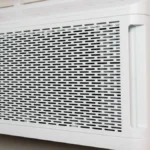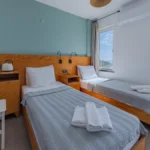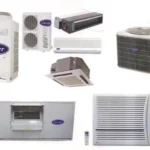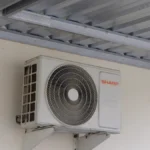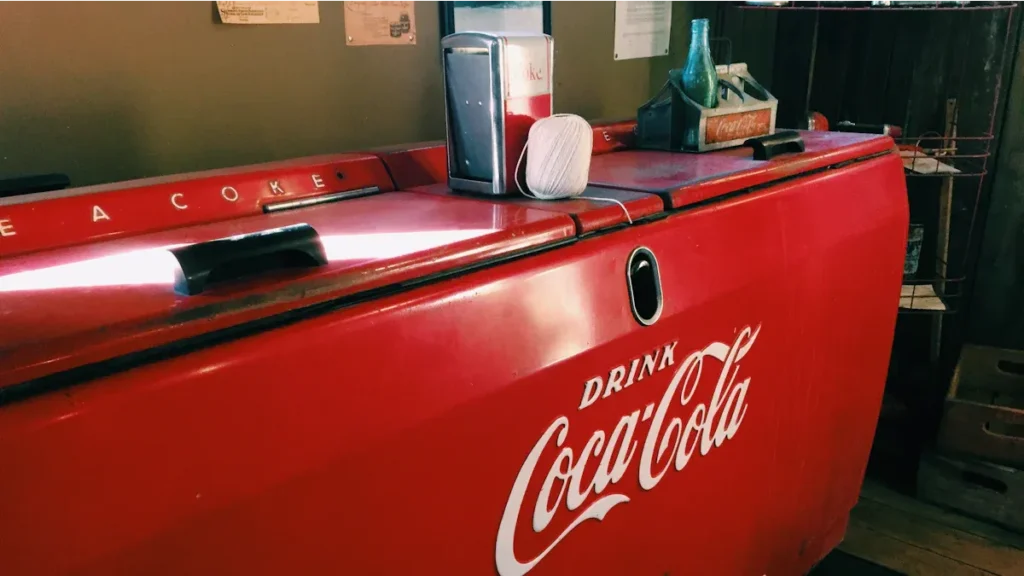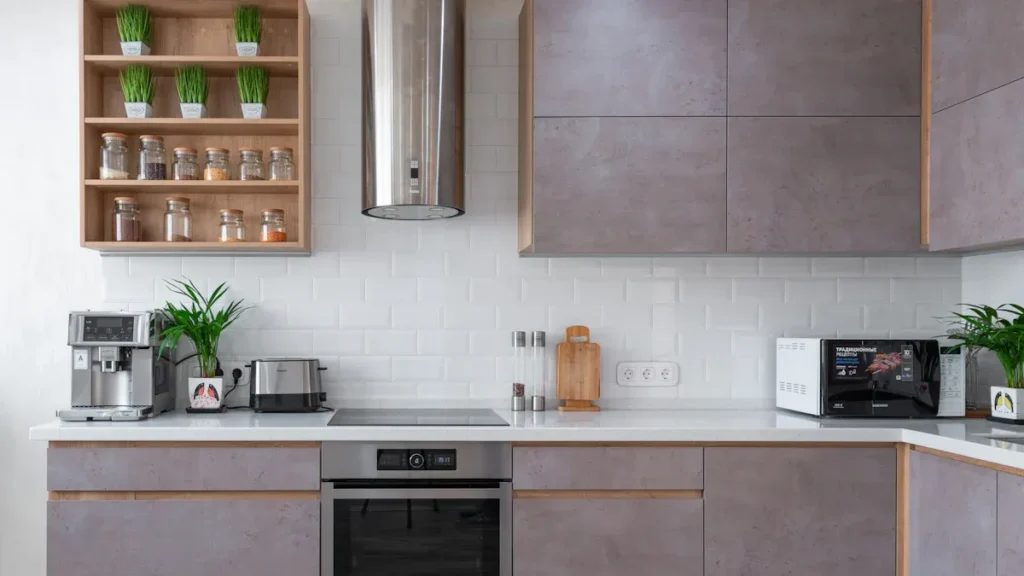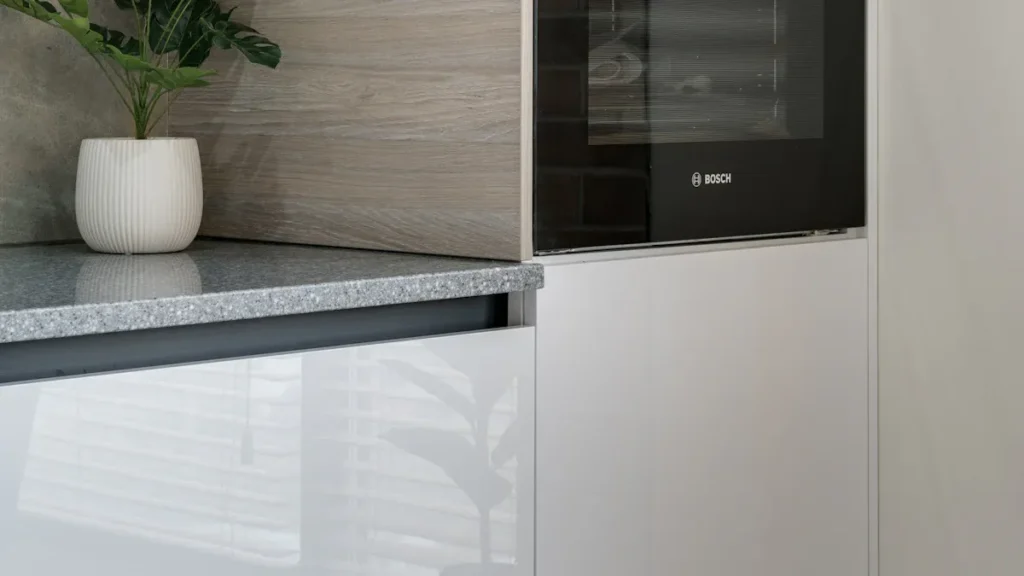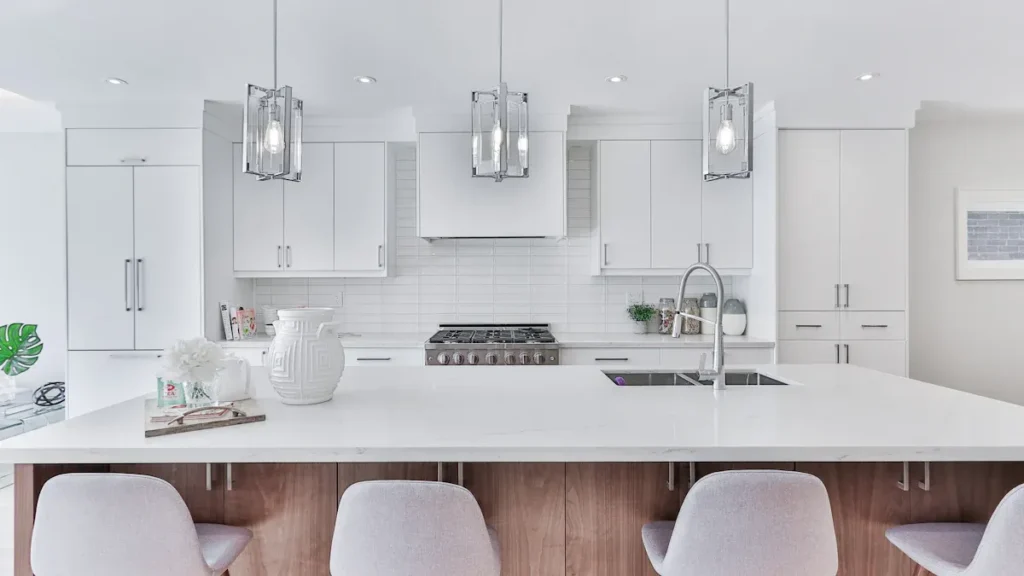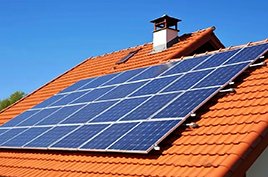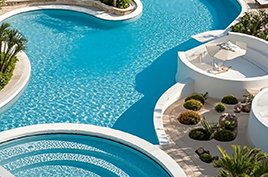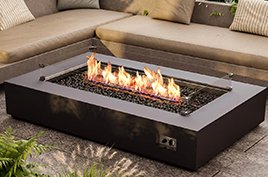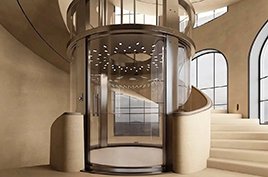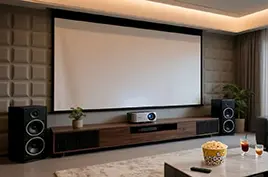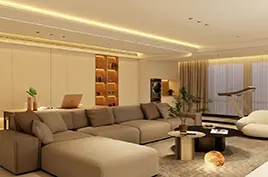You probably wonder if a swamp cooler or an air conditioner gives you better comfort in your home. People often feel confused because both cooling systems get popular, especially when climate shifts. In places like Albuquerque, many homeowners switch from swamp coolers to air conditioners as temperatures rise. Your choice depends on climate, cost, and how energy efficient you want your air cooler to be. Swamp coolers work best in low humidity and offer an eco-friendly way to stay cool.
Key Differences
Cooling Methods
When you look at how a swamp cooler and an air conditioner work, you see two very different cooling solutions. A swamp cooler, also called an evaporative air cooler, uses water and a fan to create a cooling effect. The fan pulls warm air through wet pads. As the air passes through, the water evaporates and cools the air. This process adds humidity to your home, which can feel refreshing in dry places.
An air conditioner uses a different method. It relies on refrigeration. The system pulls warm air from your room, removes the heat, and then sends the cooled air back inside. It also removes moisture from the air, which helps lower humidity levels. This makes an air conditioner a strong choice for places with high humidity.
Here’s a quick look at the main differences:
Feature | Swamp Coolers | Air Conditioners |
|---|---|---|
Cooling Method | Evaporation (adds humidity) | Refrigeration (removes humidity) |
Initial Cost | Less expensive to install | Higher upfront installation costs |
Operating Costs | Typically use less electricity | Higher operating costs |
Cooling Power | Works best in dry climates | Consistent performance in any climate |
Brings in fresh air, but also dust | Uses filters to reduce allergens | |
Home Comfort Control | Limited customization | Offers thermostat control |
You might notice that a swamp cooler brings in fresh air and can be more eco-friendly. It uses less energy and works well as an air cooler in dry areas. An air conditioner, on the other hand, gives you more control , which is helpful if you live where humidity is high.
Tip: If you want a cooling effect that feels like a fresh breeze, consider an evaporative cooler. This is especially good if you live in a dry area. If you need effective cooling in any climate, an air conditioner offers steady performance.
Climate Suitability
The climate where you live plays a big role in which system will give you the best cooling comfort. Swamp coolers shine in hot, dry climates. The evaporative process works best when the air is not already full of moisture. In these places, a swamp cooler can deliver effective cooling and even make the air feel fresher by adding a bit of moisture.
Air conditioners work well in almost any climate. They remove moisture from the air, so you get a cooling effect even when humidity levels are high. This makes them a solid choice if you live in a place with sticky, humid summers.
Let’s break it down:
Climate Type | Cooling Method | Effectiveness |
|---|---|---|
Dry | Swamp Cooler | |
Humid | Air Conditioner (with dehumidification) | Consistent, effective cooling |
User satisfaction often depends on matching the right system to the right climate. People in dry areas often love their swamp coolers because they are energy-efficient and add a touch of moisture to the air. In humid places, most people prefer air conditioners because they keep the air dry and cool, even during heatwaves.
Swamp coolers are economical, energy-efficient, and ideal for hot, dry climates. They produce fresh air and need only simple maintenance.
Air conditioners work in all climates. They have advanced air filters and provide cool comfort, even in high humidity.
If you want an eco-friendly way to stay cool and live where the air is dry, a swamp cooler or evaporative cooler can be a smart choice. If you need a way to cool your home, an air conditioner can help. It will keep your home comfortable during the summer heat and humidity.
Swamp Cooler Overview
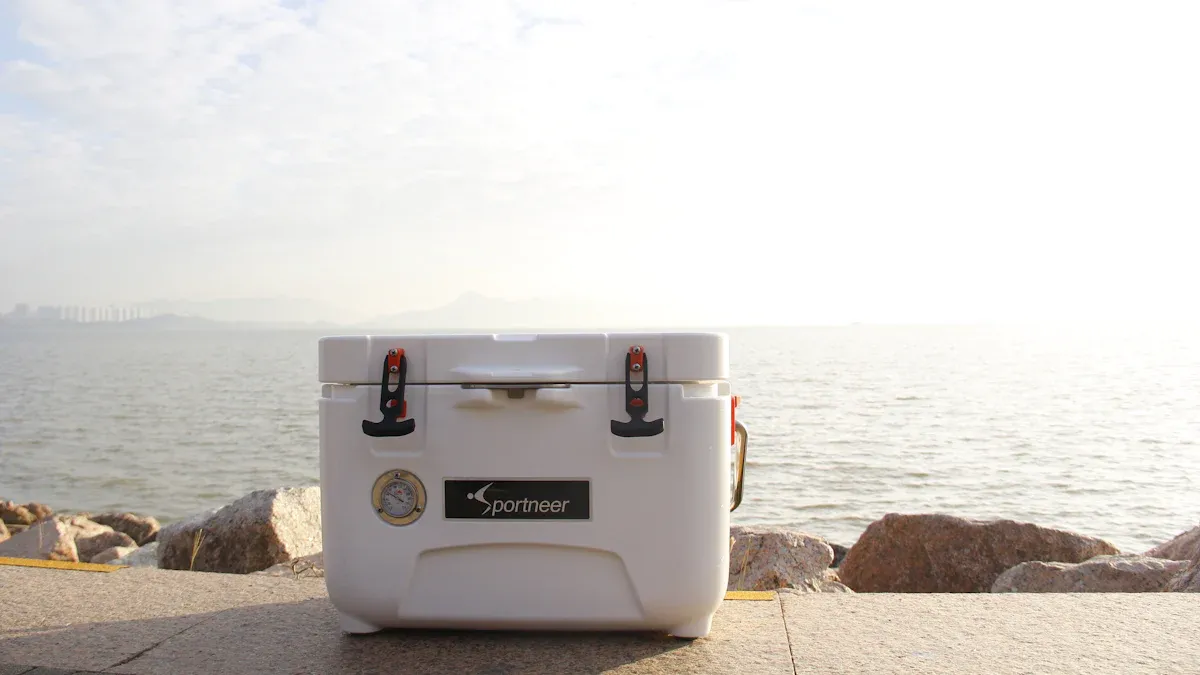
How Swamp Coolers Work
You might wonder how a swamp cooler actually keeps your home comfortable. This type of air cooler uses a simple but effective process called evaporative cooling. When water evaporates, it absorbs heat from the surrounding air, which makes the air cooler. The swamp cooler pulls warm air from outside and pushes it through damp pads. As the air passes through, the water in the pads evaporates and cools the air. The blower then circulates this cooler air throughout your space.
Here’s a quick look at the main parts of a swamp cooler and what they do:
Component | Function |
|---|---|
Blower | Moves air from outside into your home. |
Damp pads | Hold water and help with evaporation to cool the air. |
Keeps the pads wet for continuous cooling. |
A swamp cooler not only cools your home but also adds humidity, which feels refreshing in dry climates. If you live in a place where the air is dry, you’ll notice that an evaporative air cooler can make your indoor environment much more comfortable. The process is natural and energy-efficient, making it a popular choice for many homeowners.
Tip: If you want an air cooler that uses less electricity and gives you fresh, cool air, a swamp cooler is worth considering.
Water evaporates and absorbs heat from the air.
The blower pushes the cooled air into your home.
Damp pads and a water pump keep the system running smoothly.
Best Uses
You’ll get the most out of a swamp cooler in hot, dry climates. These air coolers work best where humidity stays low, like in desert regions or places with arid summers. If you live in a dry area, a swamp cooler can lower the temperature inside your home and make the air feel fresher. Many people use evaporative coolers in homes, garages, and even small businesses.
Swamp coolers are also great if you want a cost-effective and energy-saving alternative to traditional air conditioning. They use less electricity and provide a steady flow of cool air. You might find them especially useful in places where air conditioners struggle to keep up with the heat. The evaporative process makes them ideal for environments where adding a bit of moisture to the air is a good thing.
If you’re looking for an air cooler that’s easy to maintain and works well in dry climates, a swamp cooler could be your best option.
Air Conditioner Overview
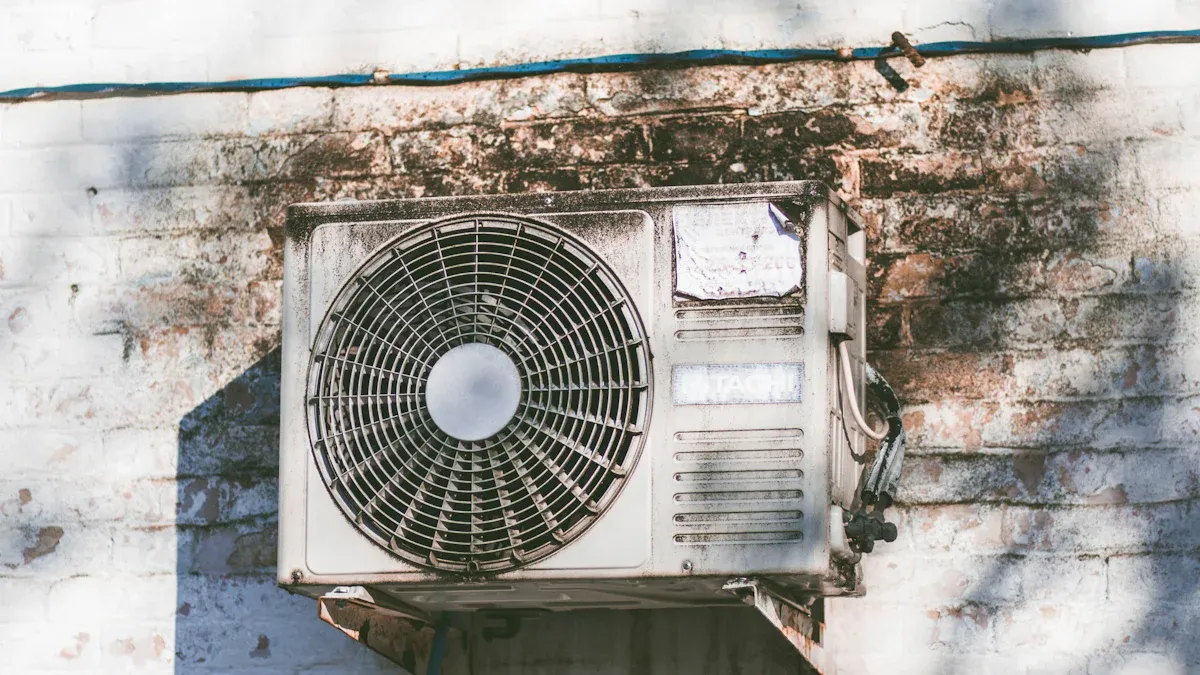
How Air Conditioners Work
If you want a system that keeps your home cool no matter the weather, you might look at an air conditioner. This device uses a refrigeration cycle to remove heat from your indoor air. The process does not just cool the air—it also lowers humidity, which can make your space feel much more comfortable during sticky summers.
Let’s break down the main parts of an air conditioner and what each one does:
Component | Function |
|---|---|
Circulates the refrigerant and raises its pressure, starting the cooling process. | |
Condenser | Releases heat from the refrigerant to the outside air, turning it from gas to liquid. |
Expansion Device | Lowers the pressure of the refrigerant, making it cool before it enters the evaporator. |
Evaporator | Absorbs heat from your indoor air, cooling your space as the refrigerant turns to gas again. |
When you turn on your air conditioning, the compressor pumps refrigerant through the system. The condenser releases heat outdoors, while the evaporator absorbs heat from inside your home. This cycle repeats, giving you steady cooling and helping to control humidity levels. Unlike a swamp cooler, an air conditioner does not add moisture to the air. It removes it, which is great if you live in a humid area or want to avoid adding humidity.
Tip: If you want precise temperature control and relief from muggy air, air conditioning can make a big difference.
Best Uses
You will find air conditioners in many different places because they work well in almost any climate. Here are some common settings where air conditioning shines:
Homes with central air conditioning or window units
Offices and retail spaces that need steady cooling
Manufacturing facilities where temperature control is important
If you live in a region with high humidity, an air conditioner can help you stay comfortable all summer. It works well in both dry and humid climates, making it a flexible choice for many families and businesses. You get reliable cooling, better air quality, and the ability to set your ideal temperature. If you want a system that works in any weather and keeps your space dry, an air conditioner is a strong option.
Swamp Cooler vs Air Conditioner: Cost
Upfront Costs
When you look at the initial price tag, you’ll notice a big difference between a swamp cooler and an air conditioner. A swamp cooler, also known as an evaporative cooler, usually costs much less to buy and install. You can often set up a swamp cooler yourself, which saves you even more money. Air conditioners, on the other hand, need professional installation. You might have to pay for ductwork and electrical updates, which adds to the total cost.
Here’s a quick breakdown of average installation costs:
Type of Cooler | Average Cost (Installed) | Cost Range |
|---|---|---|
Swamp Cooler | ||
Central Air Conditioner | $5,956 | More than double |
You can see that the cost of swamp cooler installation is significantly lower than the cost of air conditioners. If you want a budget-friendly air cooler, a swamp cooler makes sense for many homes.
Swamp coolers have lower installation costs.
Air conditioners require more complex setup and higher upfront investment.
If you want to save money on your cooling system, choosing an evaporative cooler could be the way to go.
Operating Costs
After you install your cooling system, you’ll start thinking about monthly bills. Swamp coolers use less electricity because they rely on the evaporative process. You only need water and a fan to keep things cool. This means your energy bills stay low, especially in dry climates with low humidity.
Air conditioners use more power to run compressors and fans. You might see higher monthly costs, especially during hot summer months. The cost of air conditioners can add up over time, so it’s important to factor in these expenses when you make your decision.
Swamp coolers are energy-efficient and keep operating costs down.
Air conditioners offer powerful cooling but use more electricity.
If you want a cooling solution that saves you money year after year, a swamp cooler stands out. You get fresh air, lower bills, and simple maintenance. For homes in dry areas, the cost of swamp cooler operation is hard to beat.
Energy Efficiency
Swamp Cooler Efficiency
When you want energy-efficient cooling, a swamp cooler stands out. This air cooler uses the evaporative process, which means it relies on water and a fan instead of heavy machinery. You get cool air with less electricity. Take a look at the numbers:
Device | Energy Consumption (kWh) | Cost per Hour ($) | Daily Cost Range ($) |
|---|---|---|---|
Swamp Cooler (Low) | 0.35 | 0.045 | 1.08 – 1.92 |
Swamp Cooler (High) | 0.62 | 0.08 | 1.08 – 1.92 |
Air Conditioner | 2.75 | 1.04 | N/A |
You can see that a swamp cooler uses much less energy than an air conditioner. This means you save money on your electric bill. Swamp coolers also help the environment. They do not use harmful refrigerants, so you avoid chemicals that can hurt the planet. You get lower greenhouse gas emissions because the system needs less power. If you live in a dry climate, you might notice that swamp coolers add a bit of humidity, which feels nice and fresh.
Tip: If you want an eco-friendly way to stay cool, a swamp cooler is a smart choice for energy-efficient cooling.
Air Conditioner Efficiency
Air conditioners work well in many climates, but they use more electricity. The system relies on compressors and refrigerants to remove heat and humidity from your home. This process gives you strong cooling, but it comes with higher energy use. The table above shows that air conditioners can use up to eight times more energy than swamp coolers.
Air conditioners have improved over the years. New models use safer coolants and better technology to lower their carbon footprint. Still, they need more power, which can lead to higher greenhouse gas emissions. If you want powerful cooling in humid places, an air conditioner delivers steady comfort. You get precise temperature control and relief from sticky air.
Swamp coolers do not use chemical refrigerants.
Air conditioners use more energy and have a larger carbon footprint.
Both systems offer cooling, but swamp coolers are more energy efficient.
Maintenance
Swamp Cooler Maintenance
Taking care of a swamp cooler is pretty simple, but you need to stay on top of it for the best performance. You’ll notice that regular cleaning and quick checks keep your cooler running smoothly all summer. Here’s a handy table to show you the most common maintenance tasks:
Maintenance Task | Description |
|---|---|
Thorough Inspection and Cleaning | Inspect and clean all components, including removing winter covers and checking for damage. |
Cooling Pad Assessment and Replacement | Examine and replace cooling pads annually to ensure efficiency. |
Water System Maintenance | Clean the water reservoir and distribution system to prevent clogs and ensure proper flow. |
Float Valve Adjustment | Adjust and check the float valve for proper operation and water level. |
Fan and Motor Inspection | Inspect the fan belt and motor for proper operation and lubrication. |
Electrical Components Check | Inspect wiring and test electrical components for functionality. |
Weekly Maintenance Tasks | Regularly check water levels and ensure proper airflow. |
Monthly Maintenance Tasks | Clean the water reservoir and inspect cooling pads for clogs and mineral deposits. |
You’ll want to check water levels, listen for odd noises, and make sure air flows well through your home. If you use your swamp cooler a lot, you might need to sanitize the water tank twice a week and replace the pads more often. Most people find that a quick monthly cleaning keeps things fresh and efficient.
Tip: A little attention each week can help your swamp cooler last longer and cool better.
Air Conditioner Maintenance
Air conditioners need less frequent attention, but you still have a few important jobs to keep them working their best. Most of the time, you’ll schedule a yearly checkup with a professional. Between those visits, you can handle some simple tasks yourself.
Here’s a quick list of what you should do:
Check the filter and replace it as needed.
Keep the indoor unit clean.
Compare the thermostat settings with the indoor temperature.
Inspect the condensate drain and clear any blockages.
Clean the condenser unit and the area around it.
Make sure your AC system is properly insulated.
Schedule a duct cleaning every few years.
Book annual maintenance with a pro.
You’ll also want to keep the outdoor unit free from leaves and dirt. Changing the air filter every month or two helps your system run smoothly and keeps your air clean. With these steps, your air conditioner will keep you cool and comfortable all season.
Regular maintenance means fewer breakdowns and better cooling—no matter which system you choose!
Noise Levels
Swamp Cooler Noise
When you run a swamp cooler, you might notice a gentle hum or a soft trickling sound. The noise level depends on several things. The motor makes a steady sound while the fan spins. The water pump adds a low buzz. Sometimes, you hear water moving through the pads, which can sound like a small stream. Placement matters too. If you put your swamp cooler near a window or in a quiet room, you may hear it more.
Here are some things that can make a swamp cooler louder:
The motor running during cooling
The pump moving water through the system
Water trickling through the pads and fans
Where you place the unit in your home
How high you set the fan speed
Most people find swamp coolers quieter than air conditioners. The sounds are soft and natural, almost like a breeze or a gentle rain. If you like a peaceful environment, you might enjoy the background noise from a swamp cooler.
Tip: If you want less noise, try running your swamp cooler on a lower setting or placing it farther from living spaces.
Air Conditioner Noise
Air conditioners make different sounds. You might hear the compressor start up with a click or a thump. The fan creates a steady whir. Sometimes, the motor hums louder when the system works hard. The placement of your air conditioner also affects how much noise you hear. Units outside the house make less noise indoors, but window units can be more noticeable.
Let’s look at what causes air conditioner noise:
The motor and compressor working together
The fan blowing cool air into your room
The pump cycling refrigerant through the system
The location of the unit, such as inside or outside
Air conditioners can be louder than swamp coolers, especially when they cycle on and off. Some newer models use technology to reduce noise, but you may still notice the sound during peak operation. If you want a quieter home, choose models with lower decibel ratings. You can also install the unit away from bedrooms and living areas.
Feature | Swamp Cooler Noise | Air Conditioner Noise |
|---|---|---|
Main Sources | Compressor, fan, motor | |
Typical Sound | Gentle hum, trickling | Whir, hum, clicking |
Placement Impact | Yes | Yes |
Noise Level | Lower | Higher |
If you value a quiet space, consider noise ratings before you buy your next cooling system.
Pros and Cons
Swamp Cooler Pros and Cons
When you look at a swamp cooler, you see a system that works well in dry climates. You get affordable cooling and easy installation. Many people like how an air cooler brings fresh air into their homes. You can set it up yourself and keep it running with simple maintenance. If you live in a hot, dry area, you might find it dependable.
Here’s a quick table to help you compare:
Advantages | Disadvantages |
|---|---|
Decreased efficiency in humid conditions | |
Lower energy consumption | Increased health risks due to excessive humidity |
Easier and inexpensive installation/maintenance | Susceptibility of wood-based/electronic products to moisture |
You might notice some drawbacks. Swamp coolers lose their cooling power when humidity rises. High humidity can make your home feel sticky. If you have wood furniture or electronics, extra moisture could cause problems.
Affordable and easy to install
Works best in hot, dry regions
Not effective in humid areas
High humidity can reduce comfort
If you want a budget-friendly air cooler for dry climates, a swamp cooler could be your best bet.
Air Conditioner Pros and Cons
An air conditioner gives you reliable cooling in any climate. You can control the temperature and keep your home comfortable, even during heat waves. Many families like how air conditioners remove humidity and filter the air. You get zoning options with mini-split systems, so each room stays just the way you like.
Here’s a table for a quick look:
Advantages | Disadvantages |
|---|---|
Cooling technology can be life-saving in extreme heat | High energy consumption and electricity costs |
Zoning capability for personalized comfort | Environmental impact from refrigerants |
Easy installation of mini-split systems | Accessibility issues for low-income households |
Reduced energy usage with independent controls | Inefficiency in traditional systems |
You might pay more for installation and monthly bills. Some older models use refrigerants that can harm the environment. Newer systems offer better energy savings, but you still need to watch your electricity use.
Reliable cooling in all climates
Removes humidity for better comfort
Personalized temperature control
Higher upfront and operating costs
If you want steady cooling and comfort in any weather, an air conditioner is a strong choice.
Best Choice
For Dry Climates
If you live in a dry climate, you know how tough it can be to stay comfortable during the hottest months. The air feels crisp, and humidity levels drop low. In places like Albuquerque and Espanola, where humidity can dip below 20 percent, you want a cooling system that works with your environment, not against it.
HVAC professionals recommend evaporative cooling for homes in arid regions. A swamp cooler uses water and airflow to lower the temperature and add a touch of moisture to the air. This makes your home feel more comfortable without making things sticky. You also get an eco-friendly solution that saves energy and keeps your bills low.
Take a look at how swamp coolers perform in dry climates:
Metric | Value |
|---|---|
Water Consumption Reduction | |
Operating Hours Reduction | 55% |
Electrical Energy Consumption Reduction | 67.5 W/hour |
CO2 Emission | Zero |
Potential Water Savings | 6.2 million m³ per warm period |
Parameter | Result |
|---|---|
Maximum Cooling Capacity | 17.6 W/m² |
Dry Bulb Temperature Drop | 6.8 °C |
Relative Humidity Increase | 33.5% |
Cooling Pad Configuration | Three-stage setup |
System Effectiveness | 65% |
You get strong cooling power, lower energy use, and no carbon emissions. The system even helps with water savings during the warm season. If you want a cost-effective way to beat the heat and improve comfort, a swamp cooler is a smart pick for dry climates.
Tip: If you want to save money and enjoy fresh air, choose a swamp cooler for your home in an arid climate.
For Humid Climates
Living in a humid climate brings its own challenges. The air feels heavy, and you might notice sticky skin or damp furniture. You need a cooling system that not only lowers the temperature but also keeps humidity under control.
An air conditioner stands out in humid regions. It removes moisture from the air while cooling your home, so you feel comfortable even when the weather outside gets muggy. Field studies show that air conditioners keep room-to-room temperature differences small and maintain relative humidity below 60 percent, which helps you avoid that clammy feeling.
Here’s how air conditioners perform in humid climates:
Metric | Value |
|---|---|
Room-to-room temperature difference (95% of time) | |
Room-to-room temperature difference (80% of time) | < 4 degrees F |
Average temperature difference (two-story homes) | 3.3 degrees F |
Average temperature difference (single-story homes) | 2.2 degrees F |
Median set point (programmable thermostats) | 74 degrees F |
Median set point (non-programmable thermostats) | 75 degrees F |
Relative humidity levels maintained | < 60% without supplemental dehumidification |
You get steady cooling, balanced temperatures, and a comfortable indoor climate. The system works well in homes with multiple floors and keeps humidity at a healthy level. If you want reliable comfort and better air quality, an air conditioner is the best choice for humid climates.
Note: If you live in a place with high humidity, pick an air conditioner to keep your home cool and dry.
How to Decide
Choosing the right cooling system depends on your local climate and what you want for your home. Here’s a quick guide to help you decide:
If you live in a dry, hot area and want an eco-friendly way to stay cool, go with a swamp cooler.
If you live in a humid region and need to control moisture for better comfort, choose an air conditioner.
Ask yourself these questions:
Does your climate have low humidity most of the year?
Do you want to save on energy bills and help the environment?
Is controlling indoor humidity important for your comfort?
Your answers will point you to the best cooling system for your needs. You can enjoy comfort all summer long with the right choice.
Choosing between a swamp cooler and an air conditioner depends on your climate, budget, and how much maintenance you want. You should think about these factors:
Swamp coolers work best in dry climates and cost less to install and run.
Air conditioners give you reliable cooling in any climate and need less upkeep.
Consider energy use, noise level, and how often you’ll refill water.
Take a moment to look at your home’s needs. If you’re unsure, talk to a local expert for advice.
FAQ
What’s the main difference between a swamp cooler and an air conditioner?
A swamp cooler uses water to cool air by evaporation. An air conditioner uses refrigerant to remove heat. Swamp coolers add humidity. Air conditioners lower humidity. You get fresh air with a swamp cooler. You get dry, cool air with an air conditioner.
Which system costs less to run?
Swamp coolers usually cost less to operate. They use less electricity. Air conditioners need more power, so your bills go up. If you want to save money, a swamp cooler works best in dry climates.
Can I use a swamp cooler in a humid area?
Swamp coolers work best in dry places. High humidity makes them less effective. If you live where the air feels sticky, you should pick an air conditioner for better comfort.
Do both systems improve indoor air quality?
Swamp coolers bring in fresh outdoor air. Air conditioners filter indoor air and remove allergens. If you want cleaner air, look for models with good filters. Both systems help, but in different ways.
Which is quieter: swamp cooler or air conditioner?
Swamp coolers make a gentle hum and water sounds. Air conditioners can be louder, especially when the compressor runs. If you want a quieter home, you may prefer a swamp cooler.

